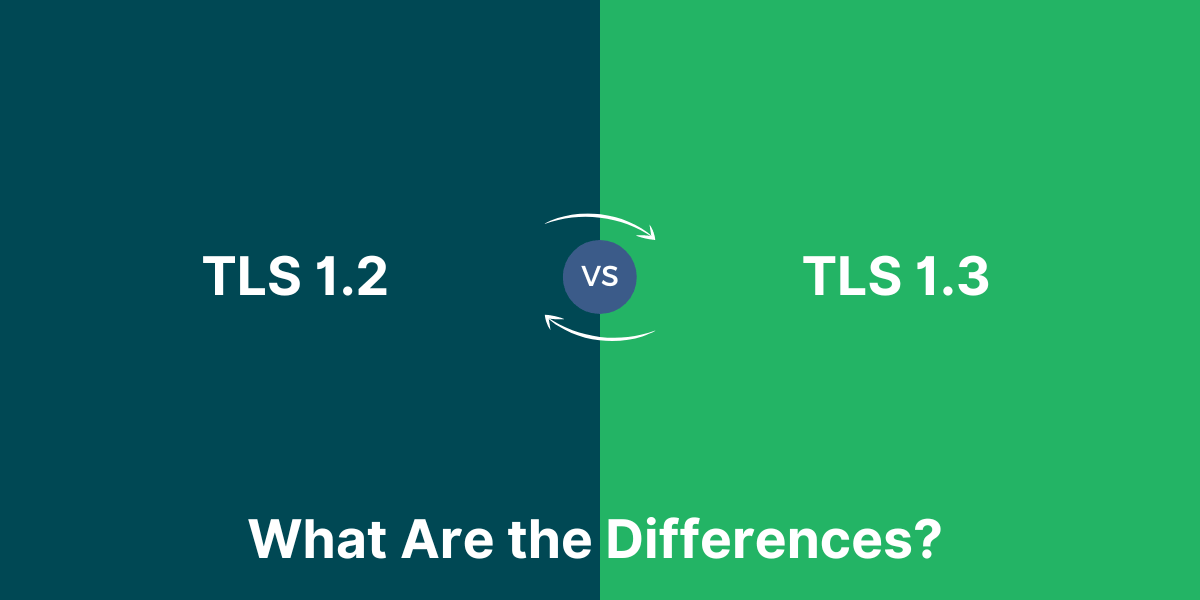The Key Differences Between HTTPS and SFTP
HTTPS and SFTP are both protocols that allow for secure data transmission over the internet. The main difference of HTTPS vs SFTP is that HTTPS operates at the application layer and encrypts web browser to server communication, while SFTP encrypts at the transport layer to secure file transfers.
HTTPS uses SSL/TLS certificates to encrypt data sent between a browser and web server. This protects sensitive information like passwords and payment details from snooping. SFTP encrypts SSH connections used for file transfers between hosts. It prevents remote data from being intercepted.
While both establish secure, encrypted channels, HTTPS is mainly used for web pages and online transactions. SFTP provides encryption for file operations like transferring website assets or exchanging documents. HTTPS operates on port 443 while SFTP uses port 22 by default.
Key Takeaways: HTTPS vs SFTP
- HTTPS and SFTP are both protocols used to transfer data securely over the internet. The main difference is that HTTPS operates at the application layer while SFTP operates at the transport layer.
- HTTPS uses SSL/TLS encryption to secure connections and transmit data through port 443. SFTP relies on SSH encryption and uses port 22 for data transfer.
- HTTPS is primarily used for securing web traffic and internet communications. SFTP is mainly used for securely accessing, managing and transferring files.
- Both protocols provide secure channels for data transfer and utilize encryption to protect data in transit. However, SFTP offers more flexibility in file management while HTTPS is more ubiquitously used across the web.
- HTTPS traffic can be inspected by firewalls and proxies while SFTP traffic generally cannot. This makes HTTPS more susceptible to man-in-the-middle attacks.
Head-to-Head Comparison Between HTTPS vs SFTP
| Feature | HTTPS | SFTP |
| Network Layer | Application Layer | Transport Layer |
| Base Protocol | HTTP with SSL/TLS | SSH File Transfer Protocol |
| Encryption Method | SSL/TLS Handshake | SSH Encryption |
| Authentication | Trusted Certificates | Host Keys, Passwords/Public Keys |
| Use Cases | Securing Websites | Secure File Transfers |
| Port Number | 443 | 22 |
| File Operations | Limited | Advanced Directory Traversal |
| Integrity Checks | Limited | Hashing of Transferred Files |
| Console Access | No | Yes, SSH Terminal |
| Resource Usage | Multiple Sessions | Single SSH Connection |
| Authentication Options | Limited | Many, Including Public Key |
| Browser Support | All Modern Browsers | Requires SFTP Client |
| Ease of Use | Very Easy | More Complex Setup |
| Flexibility | HTTPS URLs for Access Control | Granular SSH Permissions |
| Common Protocols | HTTP, WebSocket | SFTP, SCP, SSH |
How HTTPS Works Technically
HTTPS stands for Hypertext Transfer Protocol Secure. It’s built on top of HTTP and runs at the application layer to enable secure web browsing and transactions.
Encryption Mechanisms
The “S” in HTTPS represents the added encryption based on SSL/TLS protocols that isn’t present in unsecured HTTP connections.
HTTPS uses asymmetric cryptography to allow the client and server to exchange keys securely. This establishes an encrypted SSL/TLS tunnel protecting all data flowing through it.
Common encryption algorithms used by HTTPS include:
- AES 128/256 bit for symmetric data encryption
- RSA and ECC for asymmetric public key encryption
- SHA-2 and SHA-3 for cryptographic hashes
HTTPS connections must use a minimum of 128-bit encryption by default. But modern browsers and servers generally utilize 256-bit AES encryption or better for enhanced security.
Certificates and Authentication
For HTTPS to work, the server provides a digital certificate issued and digitally signed by a trusted Certificate Authority. This certificate validates the server’s identity and public key.
The client verifies the certificate signature and domain match against the server it’s accessing to authenticate the connection. This prevents man-in-the-middle attacks by ensuring traffic is encrypted with the legitimate server’s public key.
Layer 7 Protocol
HTTPS operates at OSI layer 7 – the application layer. It’s implemented as an encapsulation of the HTTP protocol within an encrypted SSL/TLS tunnel.
Normal HTTP traffic is upgraded to HTTPS using HTTP over SSL/TLS (HTTPS). The HTTPS protocol handles initializing the SSL/TLS session, then allows the application layer HTTP data transfer to proceed securely through the encrypted channel.
Port 443
HTTPS communicates over TCP port 443 by default. The client initiates a TCP handshake and then negotiates the SSL/TLS connection before transmitting HTTP application data through the tunnel.
Using a separate dedicated port 443 allows HTTPS traffic to be easily distinguished from unencrypted HTTP on port 80 within networks and firewall rules.
Use Cases
HTTPS is designed to secure web browsing sessions and transactions. Major use cases include:
- Secure websites: HTTPS prevents data like page content, user credentials and sensitive transactions from being intercepted.
- Encrypted web services: APIs and web services use HTTPS to ensure safe communication.
- Securing public WiFi: HTTPS protects users on public WiFi networks from snooping or session hijacking.
How SFTP Works Technically
SFTP stands for SSH File Transfer Protocol. It utilizes the SSH protocol to provide secure remote file access and transfer capabilities.
Encryption Mechanisms
SFTP relies on the same cryptographic primitives as SSH:
- AES, Blowfish etc. for data encryption
- Diffie-Hellman key exchange for setting up keys
- DSA, RSA, ECDSA for asymmetric encryption
- SHA-1, SHA-2 for message authentication codes
These algorithms powerfully secure underlying data while file commands are executed.
Authentication
Like SSH, SFTP supports various authentication mechanisms including passwords and public keys. The user must authenticate before accessing remote files.
Public key authentication is most common for automated file transfers. The user generates a key pair locally and installs the public key on the server for access.
Transport Layer Protocol
SFTP runs at the transport layer (OSI layer 4) as a subsystem of SSH. SSH provides the encrypted tunnel, authentication, and hosting environment for SFTP.
SSH has two main subsystems: SFTP for file access and SCP for directly copying files between hosts. The SFTP subsystem implements a remote file system protocol for securely managing files and directories.
Port 22
SFTP uses TCP port 22: the standard port assigned to SSH for establishing connections. Rather than a dedicated port like HTTPS, SFTP shares port 22 with the base SSH protocol and other subsystems.
Use Cases
Since it builds on SSH, SFTP is designed for securely accessing and managing remote files and directories. Common uses include:
- Securely transferring files between local and remote hosts e.g. web hosts
- Replacing insecure FTP with encrypted file transfers
- Providing console access to remote servers for administrators
- Scripted backups, synchronization, or file migration between servers
- Automating secure file transfers in workflows and batch jobs
How SSL Certificates Work
SSL certificates use public-key encryption to establish secure sessions between web servers and browsers:
- The website owner generates a public-private key pair and submits the public key to a CA to obtain an SSL certificate.
- During the initial site visit, the browser requests the certificate from the web server.
- The certificate verifies the website’s identity and establishes encryption parameters.
- An encrypted session is initiated using the public and private keys to share information symmetrically.
- A padlock icon and https indicate the session is securely encrypted and authenticated by the SSL certificate.
- Sensitive data like passwords and credit cards can then be transmitted securely over the encrypted SSL connection.
- Tampering or interception of communications is virtually impossible due to the encryption between browser and website.
- Users can verify they are on the legitimate site and not a fake.
Key Differences Between HTTPS and SFTP
Now that we’ve explored how HTTPS and SFTP work under the hood, let’s summarize the main technical differences between HTTPS vs SFTP:
- Network layers: HTTPS is an application layer protocol while SFTP operates at the transport layer.
- Base protocols: HTTPS extends HTTP with SSL/TLS. SFTP is a subsystem of the SSH protocol.
- Encryption: Both use similar cryptographic algorithms like AES and SHA-2 but have different handshaking mechanisms.
- Authentication: HTTPS relies on trusted certificates while SFTP uses host keys and account passwords/public keys.
- Use cases: HTTPS is for securing web browsing and transactions. SFTP is for encrypted file transfers and remote file access.
- Ports: HTTPS uses dedicated port 443. SFTP shares port 22 with SSH.
- Clients: HTTPS works at the browser level. SFTP requires special client software.
Comparing Advantages of HTTPS and SFTP
Now that we understand how HTTPS and SFTP differ, let’s compare their relative technical advantages:
Advantages of HTTPS
- Ubiquitous browser support: works with any modern web browser.
- Easy to use: no special client required beyond web browser.
- Granular access control via URLs: Separate web page access.
- Fast session establishment: Optimized for many short-lived sessions.
- Mature protocol: Standardized and built into all web servers.
Advantages of SFTP
- Directory traversal commands: Advanced file operations like recursive copies.
- File integrity checking via hash: Ensures perfect file transfers.
- Secure console access: Admins can access servers securely.
- Less resource intensive: Single persistent SSH connection for all transfers.
- Flexible authentication: Supports more authentication mechanisms.
Using HTTPS and SFTP Together
HTTPS and SFTP complement each other nicely when used properly in conjunction. Here are some examples:
- Use HTTPS to securely access a web portal and SFTP to transfer files available through that portal.
- Utilize HTTPS on your public facing website and SFTP for administrators to securely manage backend files.
- Upload files to a web server securely via SFTP then allow public downloads through HTTPS links.
- Provide SFTP access for live file operations while using HTTPS on a separate server for storing historical archives.
The core strengths of HTTPS and SFTP cover different aspects of data security. Using them together provides end-to-end protection from interception and tampering for your data.
Conclusion on HTTPS vs SFTP
In conclusion, HTTPS and SFTP utilize encryption to protect data in transit but operate at different network layers optimized for their distinct use cases. HTTPS secures web browsing sessions while SFTP enables secure file transfers and remote file access. Using them together provides comprehensive protection for web traffic, files, and data transport.
FAQ on HTTPS vs SFTP
Is SFTP faster than HTTPS?
SFTP is generally faster than HTTPS for large file transfers as it uses a single persistent connection while HTTPS establishes a new connection for each request.
Is SFTP the same as FTPS?
No, SFTP uses SSH encryption while FTPS is FTP over SSL/TLS: so SFTP is more secure than FTPS.
Can you use self-signed certificates with HTTPS?
Yes, you can use self-signed certificates with HTTPS, but they won’t provide the same level of security as CA validated certificates.
Does HTTPS protect against man-in-the-middle attacks?
Yes, HTTPS certificate validation protects against MITM attacks by verifying the server’s identity.
Does SFTP allow resuming interrupted transfers?
Yes, SFTP supports resume functionality for restarting partially transferred files in case of interruptions.

Priya Mervana
 Verified Web Security Experts
Verified Web Security Experts
Priya Mervana is working at SSLInsights.com as a web security expert with over 10 years of experience writing about encryption, SSL certificates, and online privacy. She aims to make complex security topics easily understandable for everyday internet users.



